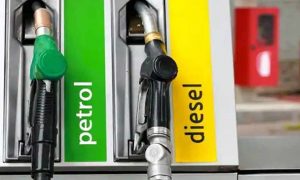Reliance Industries Ltd, India’s most valuable company, plans to commission its first solar giga-factory in the current fiscal as it pivots a green pathway to achieve net zero carbon emissions from operations by 2035. In its largest annual report, the firm said it is targeting to commission the first train of 20GW solar PV (photovoltaic) manufacturing by the end of 2024-25 fiscal (April 2024 to March 2025) and scale up to 20GW in a phased manner over 2026.
Read More: Bank loan write-offs drop by 18% in FY24, RBI data reveals
The solar giga factory will include manufacturing of PV modules, cells, wafers and ingots, polysilicon, and glass at a single location. The modules convert sunlight into electricity.
It is also targeting industrialising sodium-ion cell production at the MW level in 2025 and first 50 MWh a year lithium battery cells pilot in 2026.
Reliance had in 2021 announced plans to invest USD 10 billion over three years to develop a new fuels business based on 100 GW of renewable power capacity by 2030. The plan involves setting up four giga factories for manufacturing renewables equipment, battery storage, fuel cells and hydrogen at Jamnagar in Gujarat.
“We have made significant progress in establishing factories that will be part of our Integrated Solar PV Manufacturing,” the firm said in the annual report. “New Energy will be commissioning its first train of Module and Cell Manufacturing in FY25.”
Read More: UPI vs UPI Lite: From Transaction Limit To Availability; Which Platform Suits You Best? |Explained
Solar panels manufactured in Jamnagar have obtained BIS certification.
“Parallelly, work on renewable energy development has commenced and Reliance has been allotted land in Gujarat,” it said. “We aim to become the largest renewable energy (RE) developer in India.”
Besides commissioning the first train of module and cell of 20GW of solar PV manufacturing, 2024-25 may also see industrialise sodium ion cell production at a MW level. Next year, PV factory is to be scaled to 20GW in a phased manner, and a battery giga factory starting with a 50 MWh a year lithium battery cells pilot set up.
In FY27, it plans to establish a cell-to-pack manufacturing facility of 50 GWh and will set up 100 GW of renewable energy capacity by 2030.
The 100GW target will propel the company into the front rank of renewables ambitions globally, joining the likes of Enel, Iberdrola and oil players TotalEnergies and BP in the scale of capacity additions envisaged.
Read More: Gold Rate Today Rises In India: Check 22 Carat Price In Your City On August 11
Reliance said fossil fuels have historically fed India’s power requirements. “Structural inefficiencies combined with rising costs of fossil fuel has resulted in expensive power for commercial and residential customers – average tariff of Rs 10 per kWh (unit).”
Therefore, it is not feasible for India to keep relying on fossil fuels for its growth, it said, adding the use of fossil fuels-based energy increases dependence on imports and results in drain of foreign exchange.
“Stable and round-the-clock cost-efficient green power is the need of the hour. India needs to solve this problem to maintain its growth trajectory and reach USD 32 trillion GDP by 2047,” it said.
Reliance said over the next 12 months, its focus is to bring new energy manufacturing facilities on-stream, operate them efficiently and start developing renewable energy generation projects.
“Simultaneously, we would develop the supply chain locally for self-sufficiency and reduce the reliance on imports,” it said.
The firm aims to partner leading global climate technology and product companies and develop a business model which is flexible and adaptable to different technologies and future proofed to be always lowest life cycle cost and best in class.
Reliance has snapped up multiple partnerships in the clean energy space, such as solar and electric mobility, while pursuing its oil and petrochemical plans. Jamnagar, the world’s biggest single-site integrated refinery complex, has two refineries — one domestic-focused and a newer only for exports — that together can process low-grade crude and switch between fuels depending on prices.





































